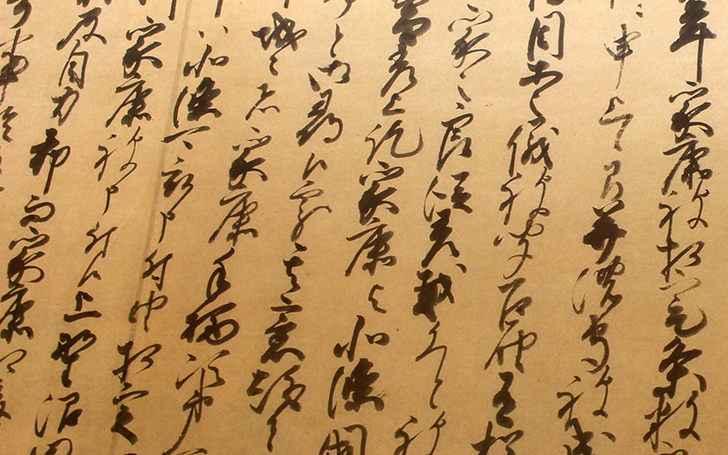46英語で説明したい日本4歌舞伎

日本語訳載せときます。
歌舞伎
歌舞伎は伝統芸能のひとつです。
歌舞伎は歌や踊り、役者の演技によって構成されています。歌舞伎は、現在は子ども役以外のすべての役が男性によって演じられています。
1603年に京都で出雲阿国が始めたかぶき踊が始まりで、京都の鴨川沿いには阿国の銅像もあります。女性の歌舞伎から若い男性の歌舞伎、成人男性の歌舞伎と規制により変化し、その後発展していきました。
歌舞伎の音楽は三味線が用いられ、旋律やリズムなどが重視された唄い物と、歌詞に物語性があり語られる内容に重きが置かれた語り物があります。
歌舞伎の演技は、ポーズをとったまま動きを止める「見得(みえ)」、役者をワイヤーで吊り舞台や客席のうえを移動する「宙乗り(ちゅうのり)」、観客の目の前で速やかに衣装を替える「早替り(はやがわり)」など観客を惹きつける工夫があります。また独特のメークもあります。
歌舞伎の上演中英語でのイヤホンガイドも借りられます。幕間に食べる弁当も買ってユネスコ無形文化遺産でもある歌舞伎を見て下さい。
作ったタイピングゲームの一覧はこちらです。
https://typing.twi1.me/profile/userId/113751
あとブログのURLは下記に。関連記事と動画があるのでよろしければご覧下さい。英語ニュース以外もあります。
http://okakyutaro.blog.fc2.com/
| 順位 | 名前 | スコア | 称号 | 打鍵/秒 | 正誤率 | 時間(秒) | 打鍵数 | ミス | 問題 | 日付 |
|---|---|---|---|---|---|---|---|---|---|---|
| 1 | りく | 4888 | B | 5.0 | 96.2% | 233.4 | 1187 | 46 | 19 | 2025/10/30 |
関連タイピング
-
テトリスサビ!!!!!!!!!!!!!!!!!!
プレイ回数13万歌詞かな167打 -
打ち切れたらギネス記録!?が好評だったのでつくりました!!
プレイ回数656歌詞444打 -
プレイ回数376短文2打
-
オーバーライド 重音テト
プレイ回数16万歌詞かな208打 -
Mrs.GREEN APPLEの青と夏です!
プレイ回数15万歌詞1030打 -
めっちゃいい曲....
プレイ回数2.9万歌詞かな200打 -
題名の通りです。60秒間ガンバ︎︎
プレイ回数205連打60秒 -
Mrs.GREEN APPLEの天国です!
プレイ回数7960歌詞かな1175打
問題文
(Kabuki)
Kabuki
(Kabuki is one of the traditional performing arts.)
Kabuki is one of the traditional performing arts.
(Kabuki consists of singing, dancing, and acting by actors.)
Kabuki consists of singing, dancing, and acting by actors.
(In Kabuki, all roles are now played by men, except for child roles.)
In Kabuki, all roles are now played by men, except for child roles.
(Kabuki dance started in 1603 by Okuni Izumo in Kyoto,)
Kabuki dance started in 1603 by Okuni Izumo in Kyoto,
(and there is a bronze statue of Okuni along the Kamo River in Kyoto.)
and there is a bronze statue of Okuni along the Kamo River in Kyoto.
(From women's kabuki to young men's kabuki to adult men's kabuki,)
From women's kabuki to young men's kabuki to adult men's kabuki,
(it changed due to regulations and then developed.)
it changed due to regulations and then developed.
(The shamisen is used for the music of Kabuki, and there are singing stories that emphasize)
The shamisen is used for the music of Kabuki, and there are singing stories that emphasize
(the melody and rhythm, and narrative stories that emphasize the storytelling in the lyrics.)
the melody and rhythm, and narrative stories that emphasize the storytelling in the lyrics.
(Kabuki performances include "Mie," in which the actor stops moving while maintaining a pose,)
Kabuki performances include "Mie," in which the actor stops moving while maintaining a pose,
("Chunori," in which the actor is suspended from a wire and moved around the stage)
"Chunori," in which the actor is suspended from a wire and moved around the stage
(and on the audience seats, and the actor moves quickly in front of the audience.)
and on the audience seats, and the actor moves quickly in front of the audience.
(There are tricks to attract the audience, such as "Hayagawari,")
There are tricks to attract the audience, such as "Hayagawari,"
(in which costumes are changed for the first time.)
in which costumes are changed for the first time.
(There is also a unique make-up.)
There is also a unique make-up.
(You can also borrow an English earphone guide during the Kabuki performance.)
You can also borrow an English earphone guide during the Kabuki performance.
(Please buy a box lunch to eat between acts and watch Kabuki,)
Please buy a box lunch to eat between acts and watch Kabuki,
(which is also a UNESCO Intangible Cultural Heritage.)
which is also a UNESCO Intangible Cultural Heritage.








